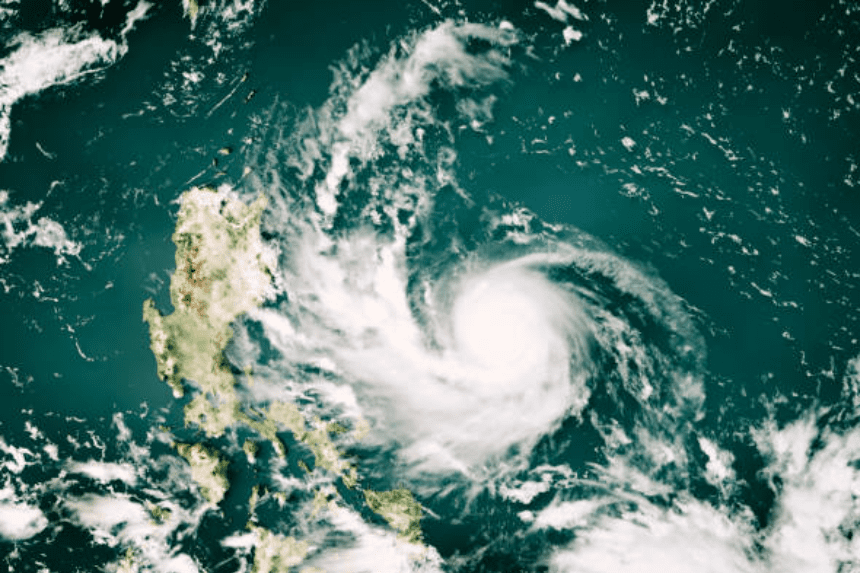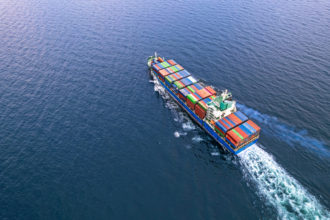Super Typhoon Ragasa, the strongest storm of 2025, has caused deadly flooding in Taiwan and is now advancing toward southern China. At least two people have been confirmed dead in Taiwan, while hundreds are trapped following the sudden collapse of a natural barrier lake in Hualien County. Emergency teams are racing against time to reach affected areas.
The typhoon, packing wind speeds of up to 285 km/h (177 mph), has prompted mass evacuations, grounded flights, and raised the highest storm alerts in Hong Kong and Guangdong Province. With catastrophic tidal surges and landslides expected, local authorities are bracing for what could become one of the most destructive storms in recent history.
What Happened in Taiwan’s Hualien County?
On Tuesday, a mountain lake—formed by earlier landslides—burst its banks in eastern Taiwan, sending torrents of water into Guangfu township in Hualien. The flood swept away a bridge, submerged vehicles, and uprooted trees. Videos showed entire streets underwater, with water levels rising as high as the second floor in some homes.
Around 263 residents were forced to climb to higher ground to escape the sudden surge. While they are currently safe, fear remains high as more rainfall is expected. Local emergency services are working nonstop to assess damage and support affected communities. Here is the link to our article on Texas Flood Alerts.
How Is China Preparing for Ragasa’s Impact?
Super Typhoon Ragasa is projected to make landfall in China’s Guangdong Province by Wednesday. In anticipation, over 370,000 residents have been evacuated from vulnerable coastal areas. Schools and businesses in several cities have been shut down as a precaution.
In Hong Kong, the storm signal was raised to level 10—the highest possible. Authorities warned of storm surges up to five meters high. Citizens rushed to supermarkets to stock up on essentials, clearing shelves of bread, vegetables, and instant noodles.
What Is the Situation at Hong Kong Airport?
Hong Kong International Airport is facing severe disruptions. Starting Tuesday evening, hundreds of flights were either delayed or canceled. Over 500 Cathay Pacific flights have been scrapped, while other airlines have halted all departures temporarily.
Officials stated that the storm would “pose a serious threat” to the city, and compared its potential impact to Typhoon Mangkhut in 2018, which caused nearly $600 million in damage. Here is the link to our article on the Texas Flood Tragedy.
Where Else Has Ragasa Struck?
Before hitting Taiwan and approaching China, Super Typhoon Ragasa passed over a northern Philippine island on Monday. One person was killed, and thousands were evacuated. Government offices and schools were shut across several regions, including Metro Manila.
Cities across southern China are now reinforcing defenses. Shop owners are piling sandbags in front of entrances. Coastal residents have taped windows and secured homes, fearing tidal waves and heavy flooding.
Why Is the Storm’s “Dirty Side” a Concern?
The eastern edge of Super Typhoon Ragasa—commonly known as the “dirty side”—poses a greater threat. This side combines the storm’s forward motion with its natural spin, creating stronger winds and more intense storm surges.
As Ragasa approaches Hong Kong and Guangdong, this destructive zone is expected to push massive amounts of water inland, worsening the risk of flooding and infrastructure damage.
Is Climate Change Making Typhoons Worse?
While scientists can’t say for sure how much climate change has influenced Ragasa specifically, rising global temperatures are expected to intensify storms in general. According to climate experts, typhoons in a warmer world are likely to produce stronger winds, heavier rainfall, and more dangerous coastal flooding—even if their frequency may decline over time.
Final Thoughts
The arrival of Super Typhoon Ragasa is a stark reminder of the increasing threat of extreme weather in the Asia-Pacific region. From Taiwan’s flooded townships to China’s mass evacuations, the storm is testing regional preparedness and resilience. As the storm continues its path toward northern Vietnam, millions remain at risk, and the need for swift action and support is urgent. Governments and citizens alike must stay alert as Super Typhoon Ragasa continues to unfold.








